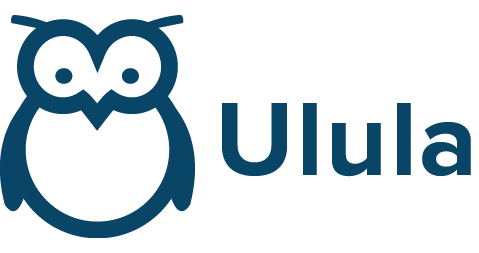The German Supply Chain Due Diligence Act (SCDDA) is Germany’s latest legislative effort in the fight against modern slavery. It’s due to come into force in 2023 for companies with over 3,000 employees, and 2024 for companies with over 1,000 employees. To avoid significant legal fines and reputational risks, the 3,000 companies affected will need to take concrete steps to implement the SCDDA and demonstrate their commitment to more sustainable supply chains.
The SCDDA aims to “closely align with the due diligence standard of the UN Guiding Principles (UNGPs).” It’s a second chance for Germany to align its laws with the UNGPs, the gold standard for effective corporate human rights and due diligence (HRDD) processes.
The January 1st, 2023 deadline for compliance isn’t far off, so the recent slew of Government guidance is timely. To implement the guidance effectively, companies operating in Germany will need to modernize their approach to supply chain human rights issues.
In four steps, we’ll explain how your company can ace compliance with the SCDDA by establishing processes that capture modern slavery and human rights risks in the supply chain before they take root.
Step 1: Know your Suppliers
Cultivate a deeper understanding of your supply chain, and prepare to engage where communication or knowledge gaps exist.
The SCDDA is the first piece of German legislation to require companies to proactively identify human rights issues among Tier 1 suppliers. The Act mandates a risk analysis stage for indirect suppliers where there is “substantiated knowledge” of human rights violations. Yet for most companies operating in Germany, it’s likely that the majority of human rights violations occur further downstream in the supply chain.
The latest guidance from the German government calls for companies to provide information on the basic structure of their supply chains, downstream firms, and report on the types of business relationships they have with their suppliers: Open lines of communication are essential.
In times past, opportunities to engage with stakeholders about human rights issues were sporadic or reactive. Digital innovations in the sector can keep comms lines up 24/7 and proactively engage workers and communities in global supply chains. Collaborative-design platforms facilitate cooperation between stakeholders and build a more complete picture of their supply chain.
Step 2: Implement Collaborative Risk Management
The new guidance recommends that companies outline a multi-step strategy to identify, mitigate, prevent and prioritize risk in their supply chains. That means carrying out risk analyses for their direct suppliers, and for all other business relationships where risk may occur. A Responsible Person must then be appointed to oversee the whole system.
The act’s emphasis on prevention of human rights risks means risk analyses will need to identify risks in an appropriate and timely manner. Without implementing systems to capture human rights impacts in their supply chains proactively, they might find that someone else discovers them first. The reputational benefits of meticulous, structured risk analysis can’t be overstated.
Companies must implement a risk management system that works for workers. Digitized, anonymous, multi-lingual, remote, direct-to-worker surveys are an excellent way for companies to kick off the risk analysis process. They can make contact with workers for unfiltered feedback on potential risks for a streamlined risk identification process. Going digital increases the scale of risk monitoring by multiple factors, which would be otherwise too costly to do with in-person audits, or with call-centers. Accessibility needn’t be an issue, as multi-channel surveys can be designed for workers with limited access to technology.
To maximize the benefits of involving all stakeholders, companies ought to deploy a risk management platform designed to facilitate multi-organizational inputs, and house data in an accessible dashboard. This means that knowledge about risks, and best practice, can be built upon year on year.
Step 3: Implement an Anonymous and Accessible Grievance Process
Companies without an effective grievance mechanism can be fined up to €800,000. The act has its own definition of what “effective” means where grievance mechanisms are concerned.
The UNGP recommends that the process of identifying rights risks is “informed by the perspectives of those who may be negatively impacted.” That’s why the best approach to compliance with the SCCDA is to build a grievance system that starts with people, not processes.
Anti-corruption legislation has driven many companies to use hotlines to get feedback from direct employees. The SCDDA’s requirements and other HRDD regulations represent a major expansion in the scope of complaints and grievance mechanisms that existing tools are not designed to address. Ensuring access for all workers across global supply chains requires a more inclusive system that enables easy engagement in any language through simple and smart phones. The complexity of today’s supply chains also requires coordination and safe data sharing among a large number of actors. Beyond employee and HR, to create greater transparency and incentivize effective remedy. With advancements in multi-platform linguistic recognition technology, digital HRDD solutions are scalable across language barriers, so companies can apply them systematically and equitably from the first to the last mile of the supply chain.
Step 4: Ace your Reporting Obligations
When it comes to reporting, transparency is key. Compliance with the process-heavy Act is as much about building knowledge and best practice as it is about reacting to human rights risks. That’s why companies are required to make their due diligence documentation public.
An annual report based on a standardized structured questionnaire will need to be made public on the company’s website and submitted electronically to the Federal Office of Economics and Export Control (BAFA). Though we don’t yet know precisely what the report will have to include, guidance from the German government gives us a good idea.
A company’s reporting can only be as comprehensive as the risk management systems it’s founded on. A centralized dashboard serving as a single point of access for statistics and analyses which can be stratified into aggregated reports that will make meeting the reporting requirements of the SCDDA much easier.

